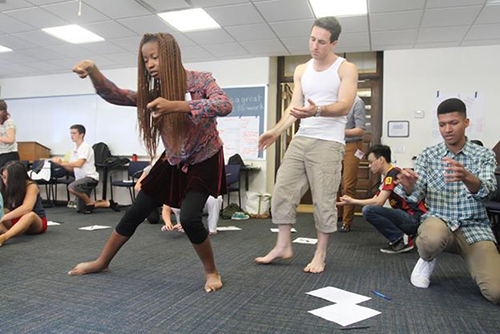
To explore and remix Shelley’s Frankenstein in a multi-media context is currently the creative challenge for 13 teachers from around the world and 13 New York City high school students at Teachers College, کولمبیا یونیورسٹی. The Common Core Curriculum Standards have curtailed the study of fiction in favor of STEM disciplines. The multi-media remix of Frankenstein places the spotlight on fiction and the humanities as critical components of a 21st century education and asks: How else can we creatively engage with literature in the learning environment? The project will culminate with a presentation at The Center for the Professional Education of Teachers on July 17. And it’s just the beginning. After this workshop ends, the visiting teachers will design original curricula to take back to their classrooms around the world. This in turn will lead to an international conference next April at Teachers College to build on the Frankenstein experiment and expand new ideas to other practicing communities.
تعاون, تنقیدی سوچ, taking risks, مسئلہ کو حل کرنے, تخلیقی صلاحیتوں, and learning from each other are 21st century skills we talk about frequently in تعلیم کے لئے گلوبل تلاش. Education thought leaders around the world speak to the need for more innovative projects like the workshop being done this week at Teacher’s College. To find out more, I reached out to the visiting teachers, students and leaders involved with the Frankenstein پہل.
It is my pleasure to welcome educators Liew Pei Li, Merida Lang and Margaret Leisenheimer, students Kate Bralower and Matisse Neal, and Erick Gordon, Senior Research Fellow in Education Innovation at the Center for the Professional Education of Teachers at Teachers College, کولمبیا یونیورسٹی.
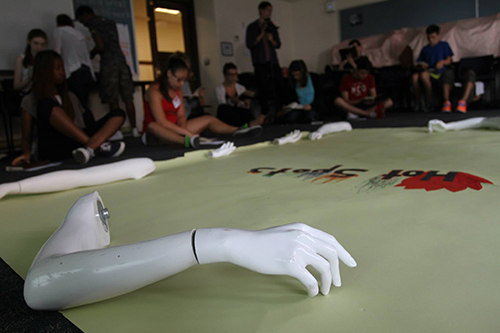
Erick, what are your goals for your global workshop?
To call it a “global workshop” is not exactly accurate. It’s more an institute with a global presence. It was very reaffirming for us to receive applications from around the world; it spoke to teachers’ great desire to blend the creative with the academic, knowing that opportunities for creative problem solving in the curriculum can inspire a student’s most committed work in all classrooms, regardless of geographic location. We believe that the most innovative and disruptive thinking occurs when we step outside of our silos and draw from the world around us. In this two-week structure, we are pushing our team to rapidly prototype over and over, to see risk and even failure as a generative component of the learning process. By next week, we will have dozens of creative assets that have come out of our work together. Then the question becomes, مجموعی طور پر, “How do we pick up the pieces and build a new text that creates and adds meaning to Shelley’s novel?”
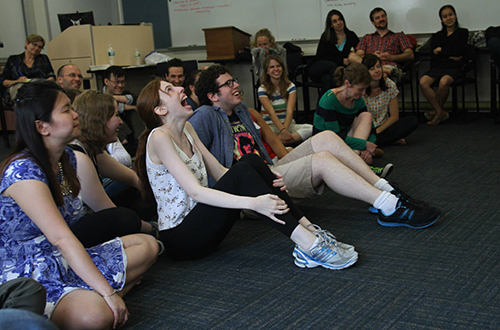
زبردست, re-imagining Frankenstein. What do you think is most valuable for those participating in a unique workshop such as this one?
میریڈا لینگ: The opportunity to shift the way we develop a relationship with a text. This program affords us the opportunity to interpret the text through a myriad of ways: رقص, آواز, تحریری طور پر, visuals, improvisation, incorporating technology. The process allows the players to embody a character. The responsibility of that task forces us to go back into the text and get to know the character more. Ownership of the text isn’t limited to those who “understand the book the best.” اس کے بجائے, it’s being collectively constructed utilizing everyone’s talents; there isn’t a hierarchical system in the group.
Matisse کی اونیل: I think one of the most interesting ways that we are expressing ourselves and the themes within the novel is through movement. We may use sharp quick movements to present the creature and its representation in society. His rejection can be portrayed through movement while someone overlooks the “رقص,” possibly narrating lines from either the novel or from a player’s interpretation of his character to heighten the audience’s understanding of that character’s role in society or life.
مارگریٹ Leisenheimer: I started to work on a monologue that combines speech from the character of Caliban from Shakespeare’s ٹیمپیسٹ with a few words that Frankenstein’s Creature used to describe his disgust with his creator. Just as Caliban hated his master but longed for power, Frankenstein’s Creature longs for love from a man that he hates. Another piece that I am working on with a player in our program is about the life of Justine who is not a main character in the novel. We are trying to find the best way to portray her life in a tableau and create an audio piece that can accompany it.
Pei کی لی Liew: By moving like the character, we’ve been better able to put ourselves in his/her shoes literally and figuratively. Literature is after all an engagement of the head, heart and soul.
کیٹ Bralower: If one person has an undeveloped idea, someone can then go and develop it further. We are remixing Frankenstein in every way we possibly can.

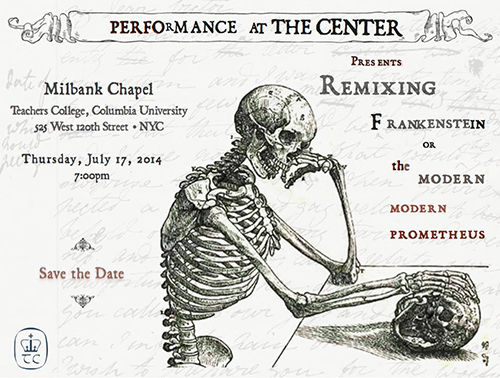
What have you all gained so far from this experience?
Liew Pei Li: Coming from Singapore, creative thinking is usually thought about as something that is almost EXTRA-curricular; ultimately that’s not where the real learning takes place. Critical thinking is associated with rigour and subject mastery. I’ve had a complete re-visioning of creative thinking.
میریڈا لینگ: I am just floored by the effect of equalizing the playing field and stripping everyone of their teacher/student relationship. I am reminded of the importance of being vulnerable along with my students. The fact that everyone is participating in the same activities increases trust and makes everyone more likely to take risks. I am reminded of the invaluable role that creative play should occupy within the classroom. It is allowing all of us to analyze and empathize with the characters in a profound way. We are building a relationship with this book and that’s what I want my students to do. I don’t want them to just read books and be able to spit back analysis.
Matisse کی اونیل: Collaboration is a valuable asset for both the students and teachers. The staff is doing everyone a huge favor by giving us the tools we need for later in life. Another big learning process for me is that vulnerability is not only okay, but also it can be a wonderful trait for a person to carry with them.
مارگریٹ Leisenheimer: Remain open to every interpretation of the text. As opposed to shutting someone down, we can morph our interpretations to support another person’s interpretation. This process leads to an end product of everyone’s ideas.
کیٹ Bralower: It’s not a “mine” type of place, it’s an “ہمارے” type of place. The normal “student-teacher” relationship is broken. It’s teaching me about how you can take very minor characters and develop them further. It’s teaching me about looking at things from multiple perspectives. It’s teaching me that the school system is very flawed. In this kind of a space, we are all educating each other. We all respect each other. We feel much freer to share with each other.
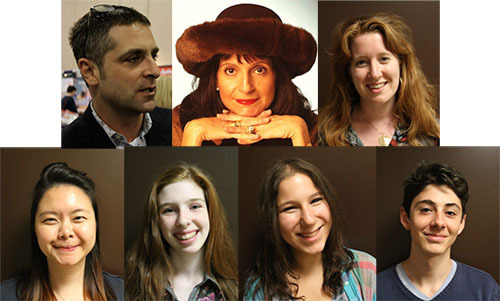
All photos are courtesy of Teachers College, کولمبیا یونیورسٹی
تعلیم کے لئے عالمی تلاش میں, سر مائیکل باربر سمیت میرے ساتھ اور عالمی سطح پر معروف فکری رہنماؤں (برطانیہ), ڈاکٹر. مائیکل بلاک (امریکہ), ڈاکٹر. لیون Botstein (امریکہ), پروفیسر مٹی Christensen کے (امریکہ), ڈاکٹر. لنڈا ڈارلنگ-ہیمنڈ (امریکہ), ڈاکٹر. مادھو چوہان (بھارت), پروفیسر مائیکل Fullan (کینیڈا), پروفیسر ہاورڈ گارڈنر (امریکہ), پروفیسر اینڈی Hargreaves نے (امریکہ), پروفیسر کریں Yvonne ہلمین (نیدرلینڈ), پروفیسر کرسٹن Helstad (ناروے), جین Hendrickson نے (امریکہ), پروفیسر گلاب Hipkins (نیوزی لینڈ), پروفیسر Cornelia Hoogland (کینیڈا), فاضل جیف جانسن (کینیڈا), مسز. چینٹل کوفمین (بیلجیم), ڈاکٹر. Eija Kauppinen (فن لینڈ), سٹیٹ سیکرٹری Tapio Kosunen (فن لینڈ), پروفیسر ڈومینک Lafontaine (بیلجیم), پروفیسر ہیو Lauder (برطانیہ), پروفیسر بین لیون (کینیڈا), رب کین میکڈونلڈ (برطانیہ), پروفیسر بیری McGaw (آسٹریلیا), شیو ندار (بھارت), پروفیسر R. نٹراجن (بھارت), ڈاکٹر. PAK NG (سنگاپور), ڈاکٹر. ڈینس پوپ (امریکہ), شریدر رازگوپالن (بھارت), ڈاکٹر. ڈیانے Ravitch (امریکہ), رچرڈ ولسن ریلی (امریکہ), سر کین رابنسن (برطانیہ), پروفیسر Pasi Sahlberg (فن لینڈ), پروفیسر Manabu ساتو (جاپان), Andreas کی Schleicher (پیسا, او ای سی ڈی), ڈاکٹر. انتھونی Seldon نے (برطانیہ), ڈاکٹر. ڈیوڈ Shaffer کے (امریکہ), ڈاکٹر. کرسٹن عمیق کر رہے ہیں (ناروے), چانسلر اسٹیفن Spahn (امریکہ), ایوز Theze (اسکول Français کی امریکہ), پروفیسر چارلس Ungerleider (کینیڈا), پروفیسر ٹونی ویگنر (امریکہ), سر ڈیوڈ واٹسن (برطانیہ), پروفیسر Dylan کے Wiliam (برطانیہ), ڈاکٹر. مارک Wormald (برطانیہ), پروفیسر تیو Wubbels (نیدرلینڈ), پروفیسر مائیکل نوجوان (برطانیہ), اور پروفیسر Minxuan جانگ (چین) وہ تمام اقوام کو آج سامنا ہے کہ بڑی تصویر تعلیم سوالات دریافت کے طور پر.
تعلیم کمیونٹی پیج کے لئے گلوبل تلاش
C. M. روبن وہ ایک موصول ہوئی ہے جس کے لئے دو بڑے پیمانے پر پڑھا سیریز کے مصنف ہے 2011 میں Upton سنکلیئر ایوارڈ, “تعلیم کے لئے گلوبل تلاش” اور “کس طرح پڑھیں گے?” انہوں نے تین bestselling کتابوں کے مصنف ہیں, سمیت Wonderland میں یلس اصلی, کے ناشر ہے CMRubinWorld, اور ایک Disruptor فاؤنڈیشن فیلو.
C پر عمل کریں. M. ٹویٹر پر روبن: www.twitter.com/@cmrubinworld


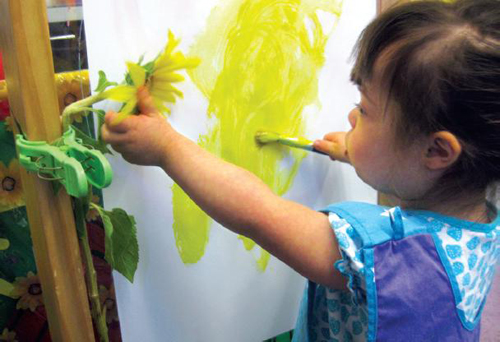
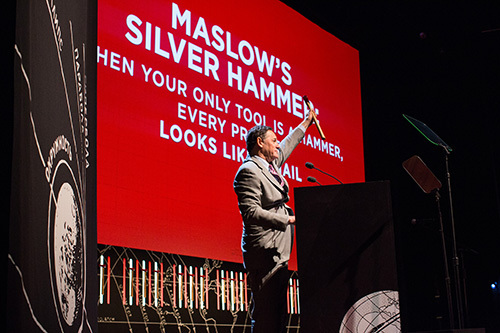


حالیہ تبصرے